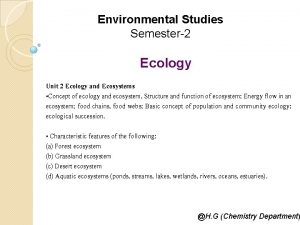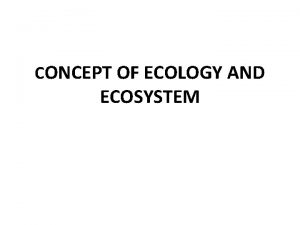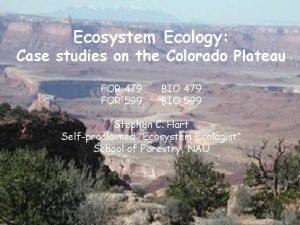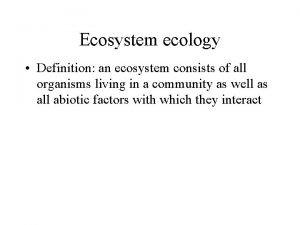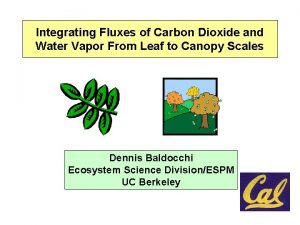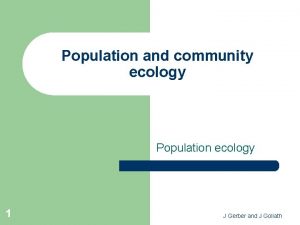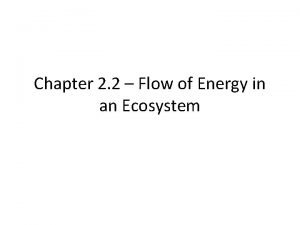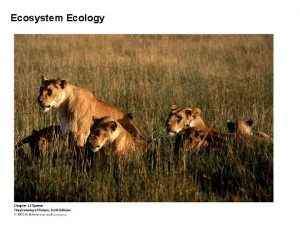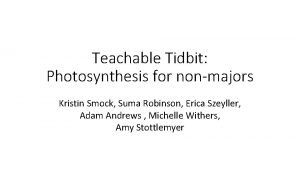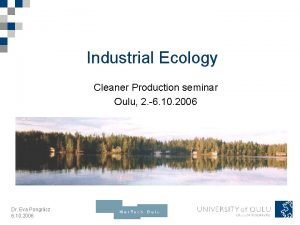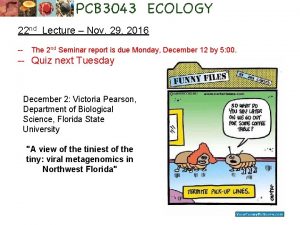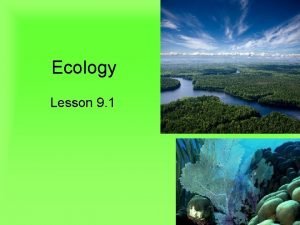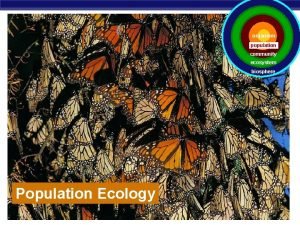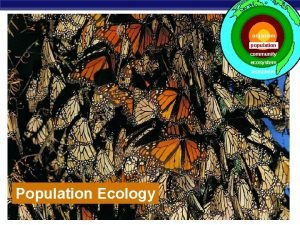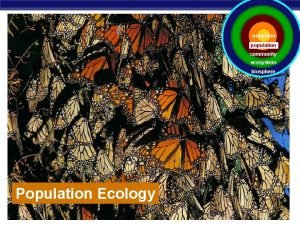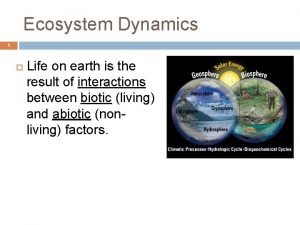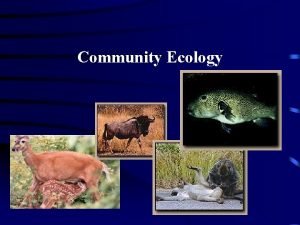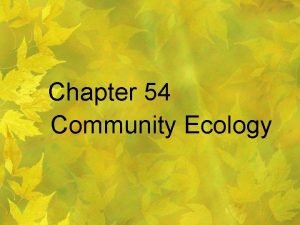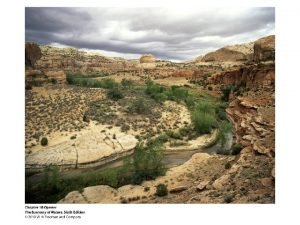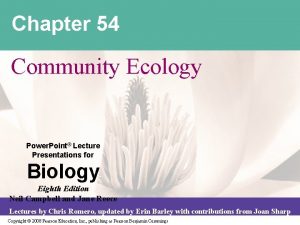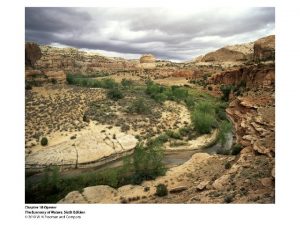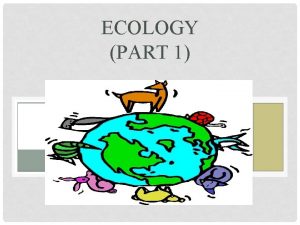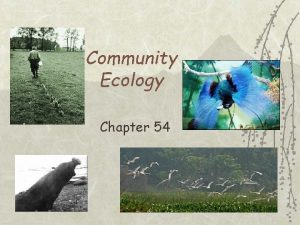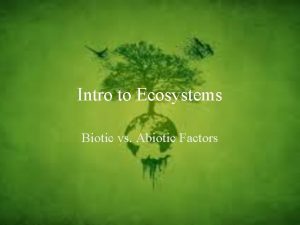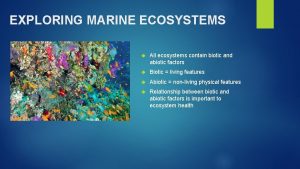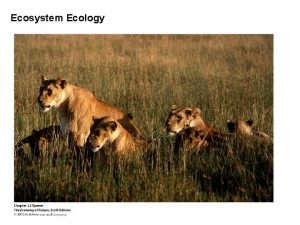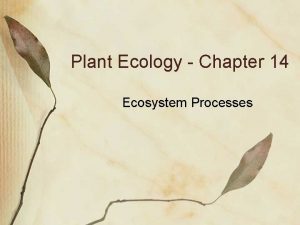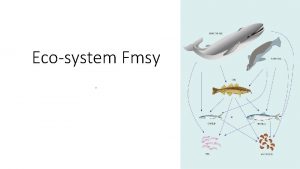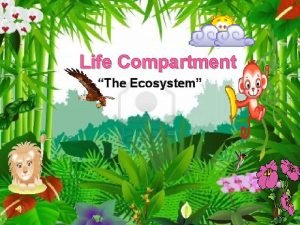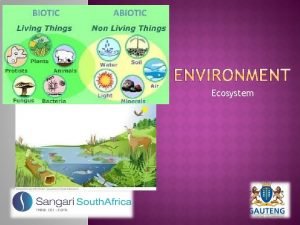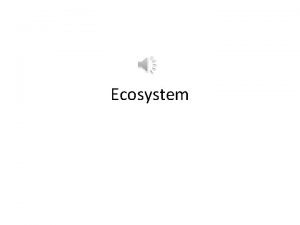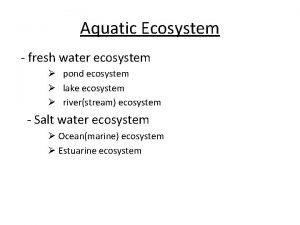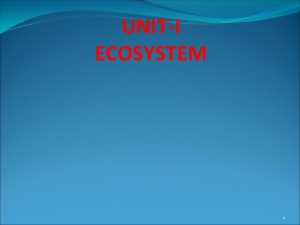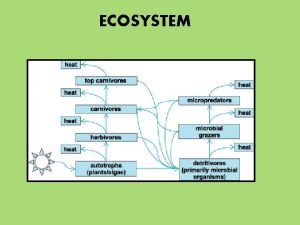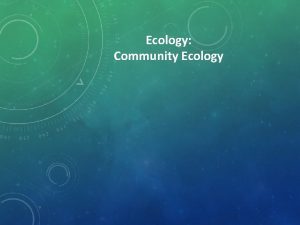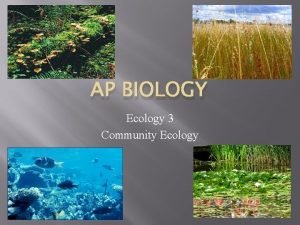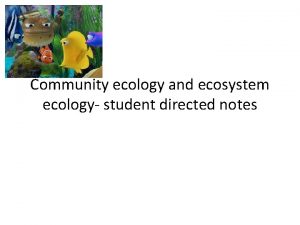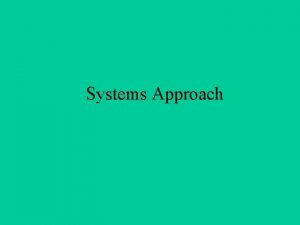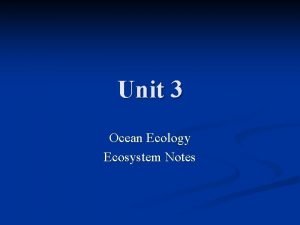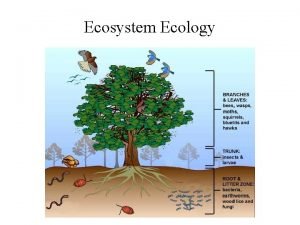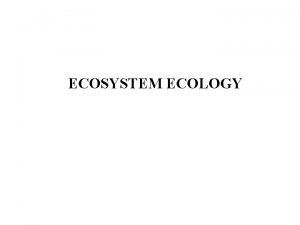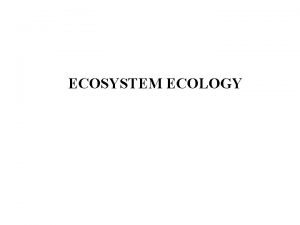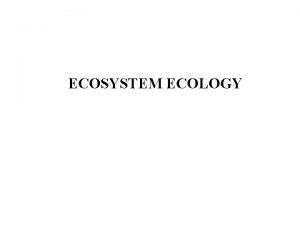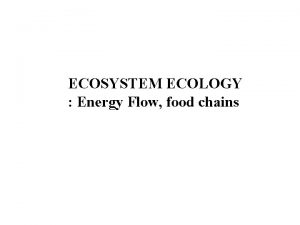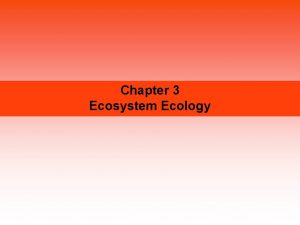Community and Ecosystem Ecology Community Ecology Community a



































- Slides: 35

Community and Ecosystem Ecology

Community Ecology Community- a group of interacting populations Community Interactions include: n Competition- the fight for resources in the environment

n Predation n Predatorthe animal that hunts n Prey-the animal that is hunted

n Symbiosisa relationship between organisms of different species 3 types: n Mutualism: a relationship in which both species benefit. n (+/+) n Ants and acacia trees n teeth cleaner birds/alligator Ants and Acacia Tree Video Leaf Cutter Ants

n Commensalism: a relationship in which one species benefits and the other is unaffected n (+/0) n Spanish moss/tree n Whale/barnacle

n Parasitism: a relationship in which one species benefits and the other is harmed. n (+/-) n Ex. Ticks, tapeworms, tree fungus, diseases. bedbugs Catfish Parasite/Ciclid

Ecosystem Ecology An ecosystem is all the living-biotic and nonliving-abiotic factors in an environment n Flow of energy and matter

Flow of Energy n n Energy flows through an ecosystem in one direction The sun provides the major energy source for producers on earth (photosynthesis) n Inorganic chemicals may also provide energy to producers where the sun cannot reach/deep ocean(chemosynthesis) The producers are then eaten by consumers Energy flow can be shown in a food chain or a food web

n n Arrows indicate the flow of energy from where energy was storedin the prey – to where the energy is goingto the predator Each organism represents a different trophic level

n n The first trophic level consists of producers. n Produce their own food n herbivores which eat the producers. The second trophic level are the primary consumers: The third trophic level are secondary consumers: n carnivores which eat the herbivores. n Carnivores which eat other carnivores The fourth trophic level are the tertiary consumers:

Chain Reaction Game

n A food web is more involved, and describes all of the possible feeding relationships in an ecosystem.

food webs

n Ecological pyramids describe the relative amounts of energy or matter at each trophic level

n. Biomass pyramids show the actual weight of all of the organisms at that trophic level.

n. Pyramid of numbers show the actual numbers of organisms at that trophic level

n. Energy pyramids show the amount of energy that is available in the bodies of the organisms at that trophic level.


n n In the energy pyramid, the amount of energy available decreases as you go up to the top. With every passing level, 90% of all energy is lost!

n There are 9000 pounds of grass in one particular habitat. n n n How many crickets can this habitat sustain? How many lizards? Hawks?

n There are 9000 pounds of grass in one particular habitat. n n n How many crickets can this habitat sustain? 900 pounds How many lizards? 90 pounds Hawks? 9 pounds

Flow of Matter n water cycle Waterevaporation, condensation, precipitation

n Carbonn Producers remove CO 2 in atmosphere and convert it into carbohydrates n Photosynthesis n Consumers eat carbohydrates and release CO 2 to atmosphere n Cellular Carbon Cycle global carbon cycle respiration

Biosphere Ecology Human Impact on the Biosphere n Natural Resources n Naturally occurring materials that can be used by man n Everything we use comes from natural resources n As the human population grows-people require more and more resources

n n Examples: air, wind, plants, animals, fossil fuels, soil, water Classified as n Renewable-can be replaced in a relatively short time n Nonrenewable-cannot be produced, regrown or reused

n Renewable vs. nonrenewable energy sources

n Sustainable development/practicesresponsible use of natural resources without depleting them Preserve Our Planet Videos

n Habitat Destruction n n Deforestation-loss of forests Habitat fragmentationdevelopment that splits ecosystems into pieces habitat fragmentation

n Pollution n n Greenhouse effect n CO 2 and other gases trap heat energy to maintain Earths temperature range n Burning fossil fuels and the loss of forests increase greenhouse gases Global Warming/Climate Changen An increase in the average temperature of the biosphere Greenhouse effect State of the Earth Videos


n Acid Rainn Burning fossil fuels releases chemicals that combine with water vapor in atmosphere forming acids n Ozone depletion n CFC’s (chlorofluorocarbons) break down the ozone layer which protects the earth from ultraviolet radiation


n Biological magnification n Pesticides and toxins are magnified in body tissues as they move up the food chain bioaccumulation Youtube: biomagnification

n Threats to biodiversity-variety of species Non-native species n Loss of habitat n Extinct species- no individuals exist n Endangered species-rapidly declining numbers n Threatened species-population in decline extinct animals on-the-verge-of-extinction NC threatened and endangered

What can you do to protect the biosphere?
 Difference between ecosystem and ecology
Difference between ecosystem and ecology Difference between ecosystem and ecology
Difference between ecosystem and ecology Ecosystem ecology
Ecosystem ecology Ecosystem consists of
Ecosystem consists of Ecosystem ecology
Ecosystem ecology Ecosystem ecology
Ecosystem ecology Principles of ecology 2 flow of energy in an ecosystem
Principles of ecology 2 flow of energy in an ecosystem Ecological productivity
Ecological productivity Ecosystem ecology
Ecosystem ecology Ecology ecosystem
Ecology ecosystem Ecosystem ecology
Ecosystem ecology Immigration definition biology
Immigration definition biology Definition of biosphere
Definition of biosphere Chapter 5 evolution and community ecology answer key
Chapter 5 evolution and community ecology answer key Chapter 5 evolution and community ecology
Chapter 5 evolution and community ecology Chapter 5 evolution and community ecology answer key
Chapter 5 evolution and community ecology answer key Exponential growth rate formula biology
Exponential growth rate formula biology Population community ecosystem biosphere
Population community ecosystem biosphere Population community ecosystem biome biosphere
Population community ecosystem biome biosphere Population vs community ecology
Population vs community ecology Organism population community ecosystem biosphere
Organism population community ecosystem biosphere Individual population community ecosystem
Individual population community ecosystem Organismal ecology
Organismal ecology Community ecology
Community ecology Section 1 community ecology
Section 1 community ecology Chapter 54 community ecology
Chapter 54 community ecology Definition of community ecology
Definition of community ecology Chapter 54 community ecology
Chapter 54 community ecology Community definition ecology
Community definition ecology Community ecology
Community ecology Levels of organization ecosystem
Levels of organization ecosystem Chapter 54 community ecology
Chapter 54 community ecology Ecosystems examples
Ecosystems examples Venn diagram of living and non living things
Venn diagram of living and non living things Are trees abiotic
Are trees abiotic Biotic and abiotic components of marine ecosystem
Biotic and abiotic components of marine ecosystem
